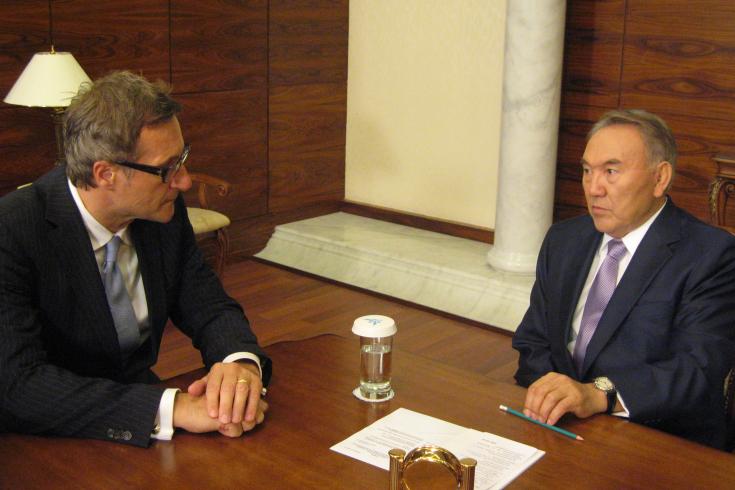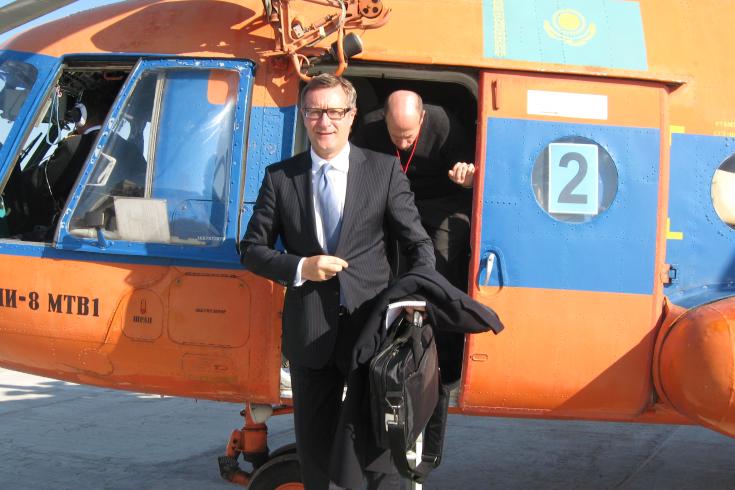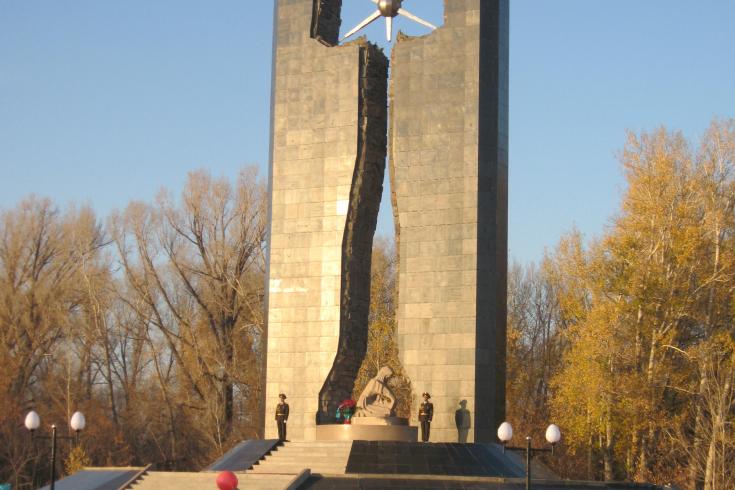20th Anniversary of Closure of
Semipalatinsk test site
Semipalatinsk test site
Click for impressions from the opening of the Forum
Let us move from ground zero to global zero – a world free of nuclear weapons for all of our children and all of our tomorrows.
In his address, International Atomic Energy Agency (IAEA) Director General Yukiya Amano emphasized Kazakhstan’s important contribution to nuclear non-proliferation and disarmament. The closure of the Semipalatinsk test site, he said, underscored and contributed to the goals of the CTBT as well as the Nuclear Non-Proliferation Treaty (NPT).

CTBTO Executive Secretary Tibor Tóth (left) met with Kazakh President Nursultan Nazarbayev in the margins of the Forum.

Participants were flown to the Semipalatnisk test site with helicopters.
This ceremony today reminds us that ending nuclear testing must remain a top priority for the global community.
According to the director of the Semey Radiological Institute, the region’s inhabitants continue to suffer in the second and third generations from cancer rates exceeding the national average by around 200%. Similarly, birth defects and suicides are disproportionately frequent.

The monument ‘Stronger than Death’ was erected 10 years ago in memory of the victims of nuclear testing at Semipalatinsk.
17 Oct 2011